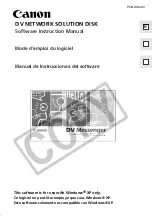
You configure BA classifiers and rewrite rules on transparent mode devices in
the same way as on devices operating in Layer 3 mode. For transparent mode
devices, however, you apply BA classifiers and rewrite rules only to logical
interfaces configured with the
family bridge
configuration statement.
You configure shapers and schedulers on transparent mode devices in the same
way as on devices operating in Layer 3 mode.
[
Junos OS Interfaces and Routing Configuration Guide
]
■
Layer 2 Q-in-Q tunneling
—This feature is supported on SRX210, SRX240,
SRX650, and J Series devices.
Q-in-Q tunneling, defined by the IEEE 802.1ad standard, allows service providers
on Ethernet access networks to extend a Layer 2 Ethernet connection between
two customer sites.
In Q-in-Q tunneling, as a packet travels from a customer VLAN (C-VLAN) to a
service provider's VLAN, a service provider-specific 802.1Q tag is added to the
packet. This additional tag is used to segregate traffic into service-provider-defined
service VLANs (S-VLANs). The original customer 802.1Q tag of the packet remains
and is transmitted transparently, passing through the service provider's network.
As the packet leaves the S-VLAN in the downstream direction, the extra 802.1Q
tag is removed.
There are three ways to map C-VLANs to an S-VLAN:
■
All-in-one bundling—Use the
dot1q-tunneling
statement at the [
edit vlans
]
hierarchy to map without specifying customer VLANs. All packets from a
specific access interface are mapped to the S-VLAN.
■
Many-to-one bundling—Use the
customer-vlans
statement at the [
edit vlans
]
hierarchy to specify which C-VLANs are mapped to the S-VLAN.
■
Mapping C-VLAN on a specific interface—Use the
mapping
statement at the
[
edit vlans
] hierarchy to map a specific C-VLAN on a specified access interface
to the S-VLAN.
Table 3 on page 114 lists the C-VLAN to S-VLAN mapping supported on SRX Series
and J Series devices.
Table 3: C-VLAN to S-VLAN Mapping Supported on SRX Series and J Series Devices
J Series (PIM)
SRX650
SRX240
SRX210
Mapping
Yes
Yes
Yes
Yes
All-in-one bundling
No
Yes
No
No
Many-to-one bundling
No
Yes
No
No
Mapping C-VLAN on a
specific interface
Integrated bridging and routing (IRB) interfaces are supported on Q-in-Q VLANs
for SRX210, SRX240, SRX650, and J Series devices. Packets arriving on an IRB
interface on a Q-in-Q VLAN are routed regardless of whether the packet is single
or double tagged. The outgoing routed packets contain an S-VLAN tag only when
114
■
New Features in JUNOS Release 10.1 for SRX Series Services Gateways and J Series Services Routers
JUNOS 10.1 Software Release Notes
















































